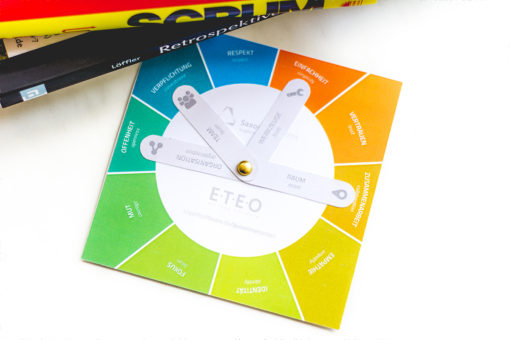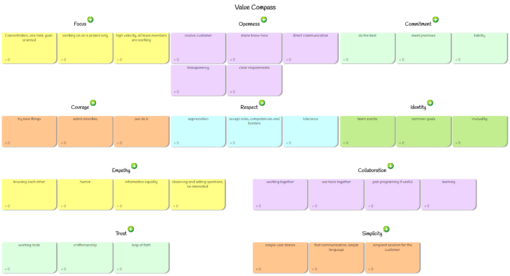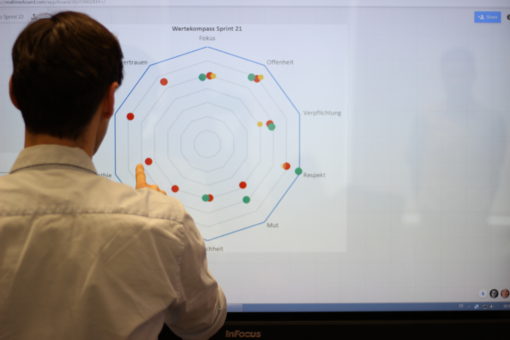Value Compass for Distributed Agile Teams
A Powerful Tool to foster Collaboration and Retrospectives
Every human being has individual experience and mental models which drives their expectations, behavior, communication and thinking. Therefore, they crucially impact team culture, interactions and collaboration. Understanding and sharing values amongst each other helps to align actions, decisions with common values and priorities. Since dysfunctions or misunderstandings have greater impact on collaboration in distributed teams, we suggest to start discussions about certain values and to define their meanings within the team. Thus, we provide a simple tool which we call value compass.
In our previous blog post we explained why and how we extend the five core Scrum values focus, courage, openness, commitment and respect by the values identity, empathy, collaboration, trust and simplicity for distributed agile teams. In this post, we show how we use these values to assess and to improve our virtual team collaboration. To be more precise, the team should consider room, organization, tools and team and how they impact each value.

1. Discuss values
Usually we start to discuss each value in kick-off workshops to get a common understanding. For example, we facilitate the meeting with a brainstorming by asking the following questions:
- Regarding empathy, what was the last moment when you really understood your team mates?
- When is our working style really simple?
- How would you describe a trustful work space?
- What means focus to you? What happens if you are not focused?
- Regarding identity, when do you feel that we are one team?
We collect the answers with sticky notes and share them with all team members. This leads to consciousness about the expectations of each team member and allows us to identify the most common interpretations and define our own values which are shared among the team. The discussion should be done at least once when a new project starts or a team changes. However, you can repeat the session if you think it is necessary.
If your team is distributed you can do this with the help of a digital whiteboard or pin board, such as IdeaBoardz.

2. Assess values
On the basis of a common understanding we now ask how each team member would assess each value within a range of 1 to 10. This can be done openly or hidden to avoid influence. We can assess each value with Planning Poker and discuss them directly or we can collect the ratings for all values and then visualize the results.
If your team is distributed you can use a digital whiteboard such as RealtimeBoard.

3. Get insights and derive improvements
To get insights, we look at each value and ask questions such as the following:
- If a value is very low: How can we improve it?
- If there are great differences: Why does a team member rate a value low while another team member rates it high? Is it due to different experience in the project or is there a misunderstanding regarding a value?
- If all values are rated high: How can we shoot for the moon and get full points for each value?
- If there has been a rating before, has the value improved or decreased? Why?
You can track your improvements in your impediment backlog and work on them with your team over time.
If you are a Scrum Master or an experienced team coach you can also apply some tools or perform a Team Booster workshop to improve a certain value. For example, you can create a team logo according to skills and strengths of the team to increase identity. Or you could start coaching the team with non-violent communication if you need to increase the value of trust. However, which measures you choose highly depends on your team and your own skills. We created a Coaching Toolbox for our Scrum Masters which contains recommendations on how to improve each value. We will explain in one of our next blog posts.
4. Get better iteratively
Assessing values and deriving improvements can be done iteratively, e.g. during each retrospective meeting. If we track the assessment over time, we can identify trends. But be aware that the value compass is intended to be used by the team. It should not be a misused by management, for example, by giving incentives for high values. This would obviously break the tool.






